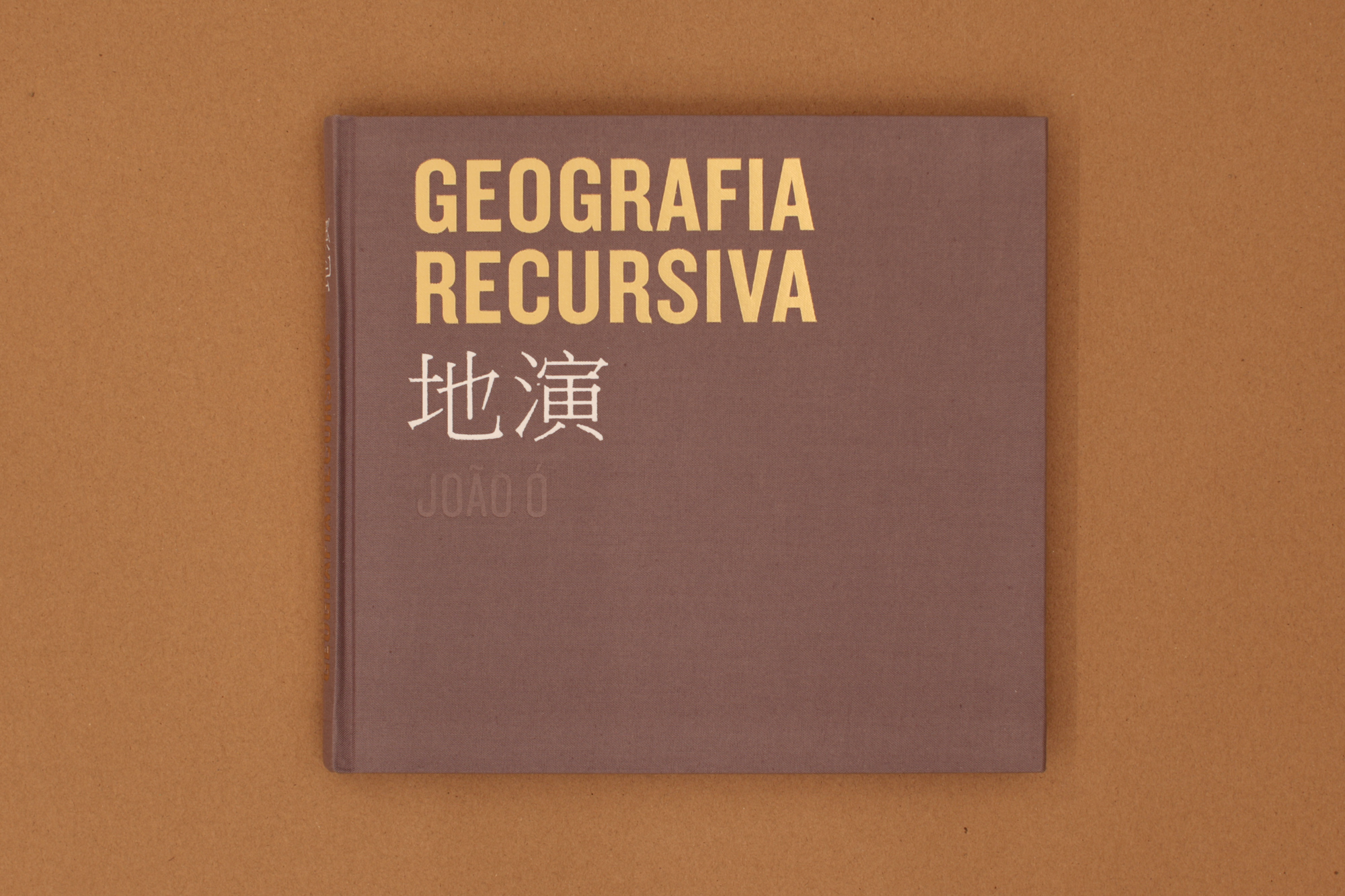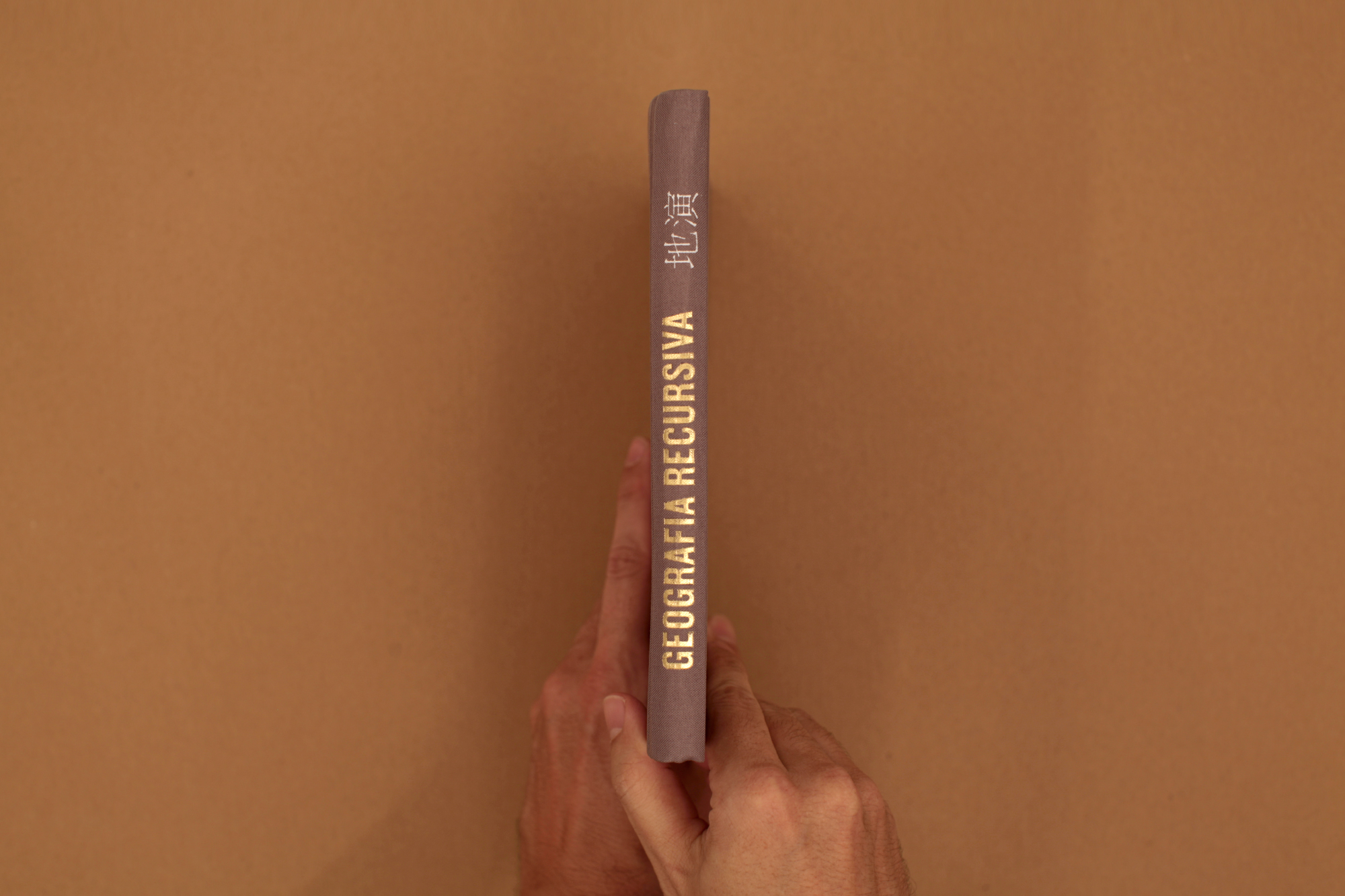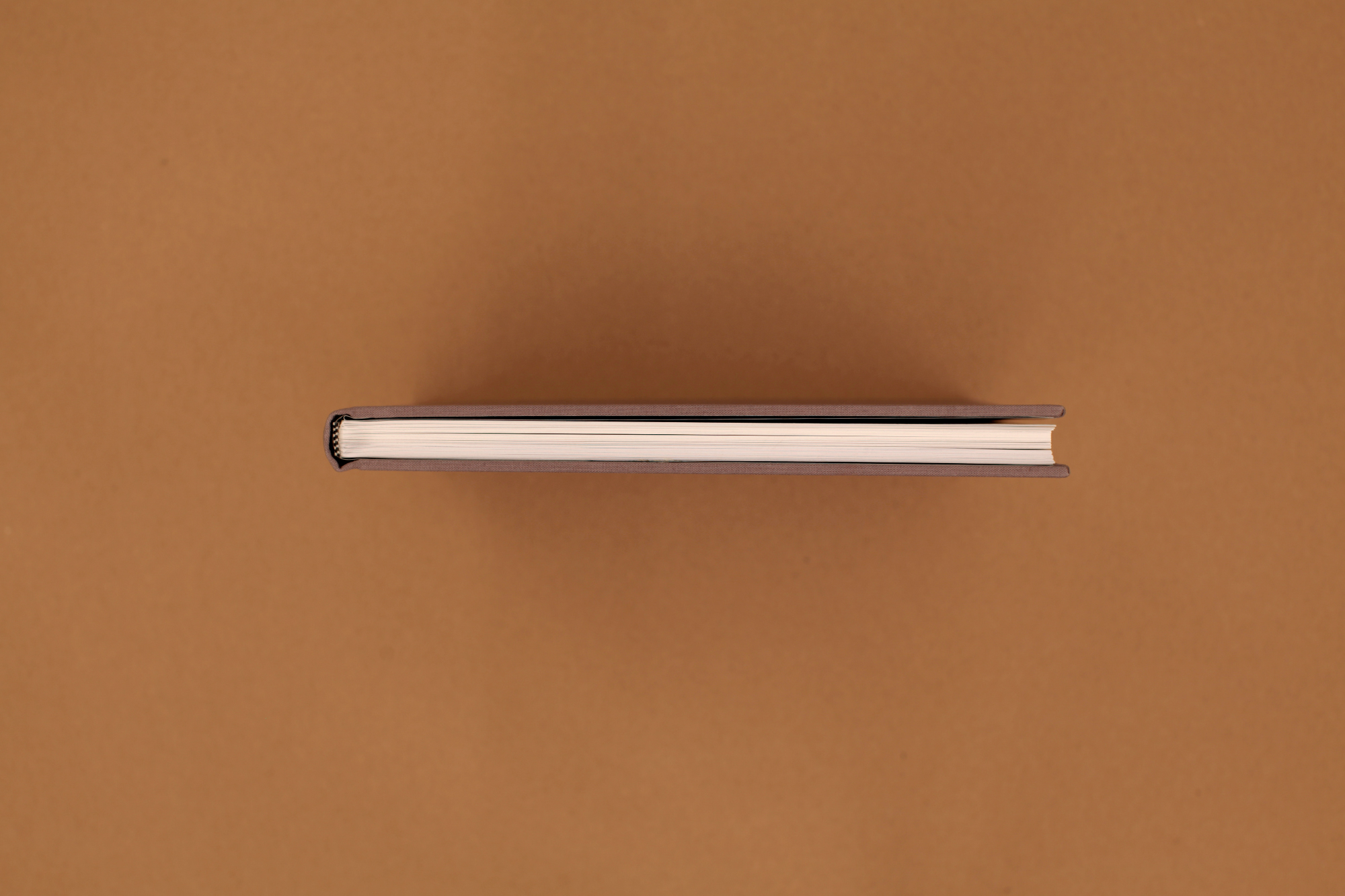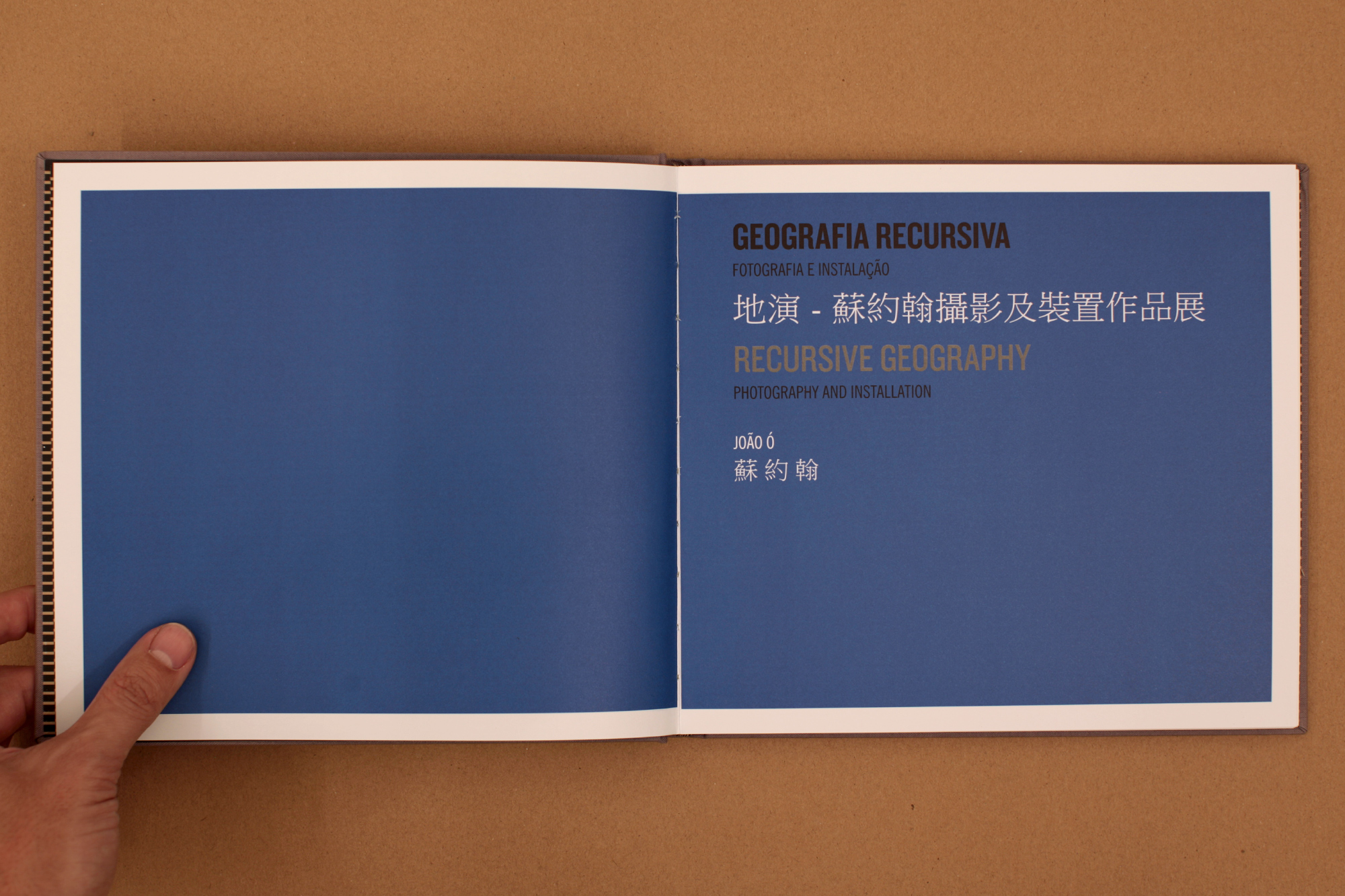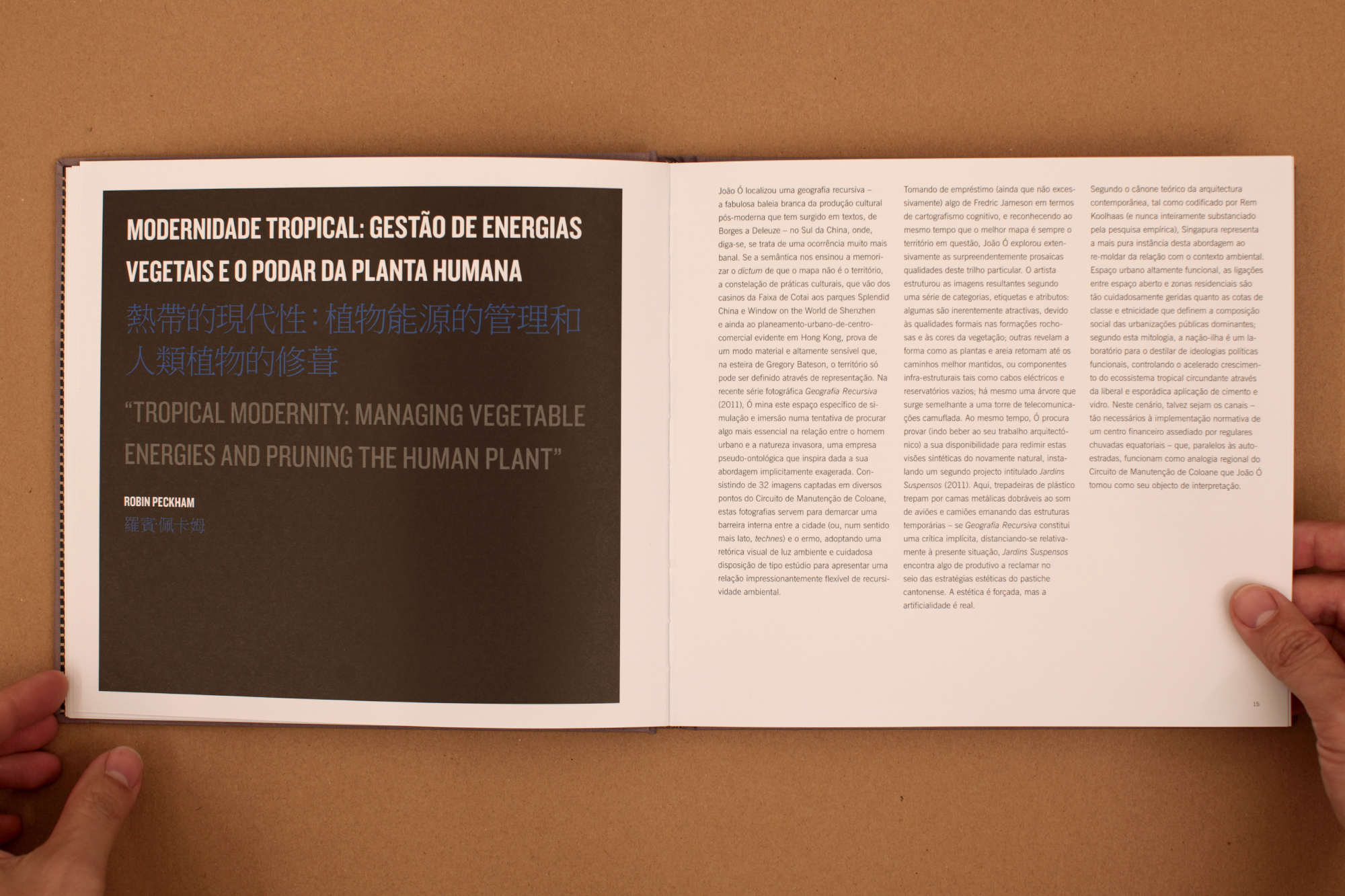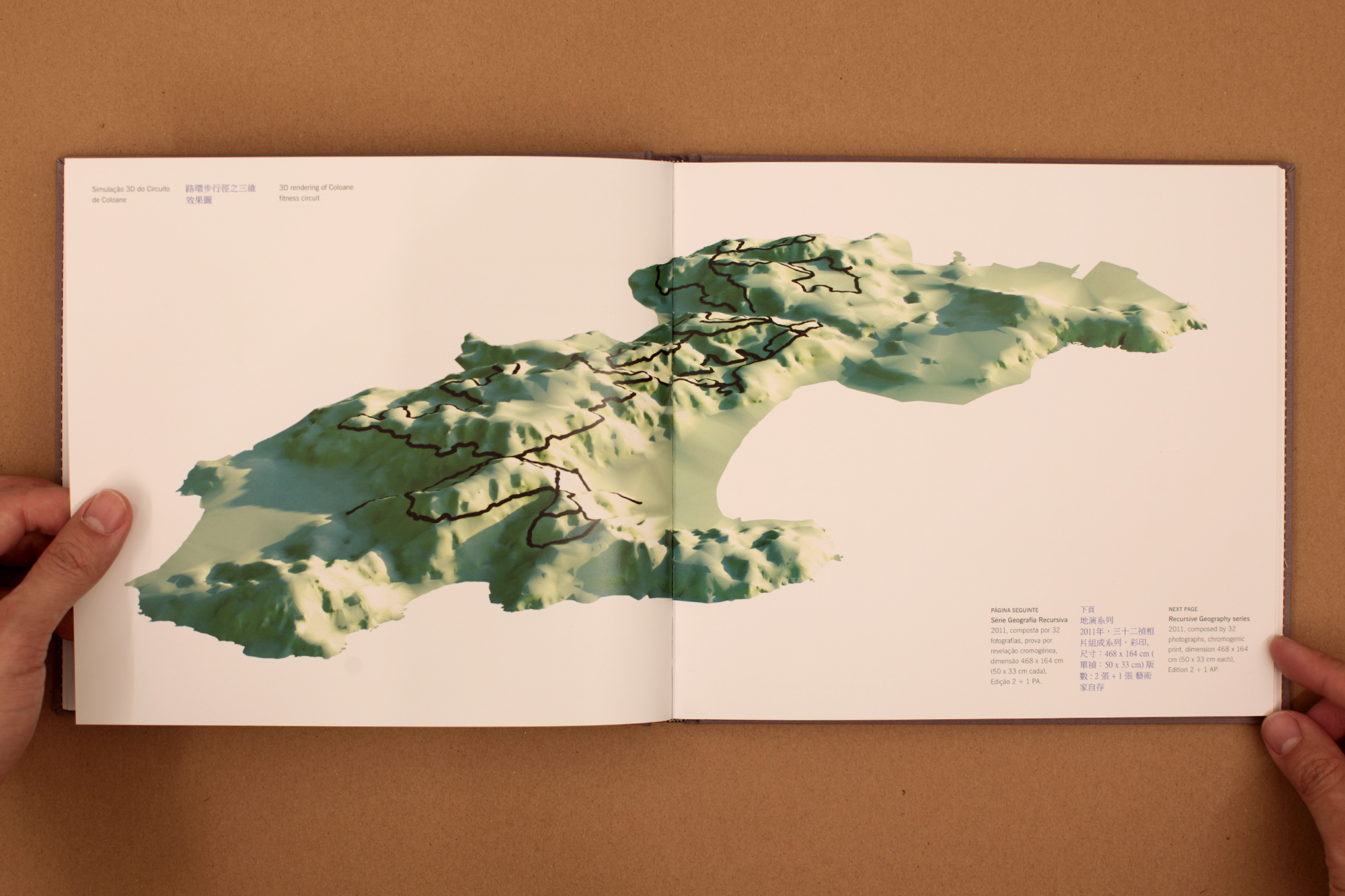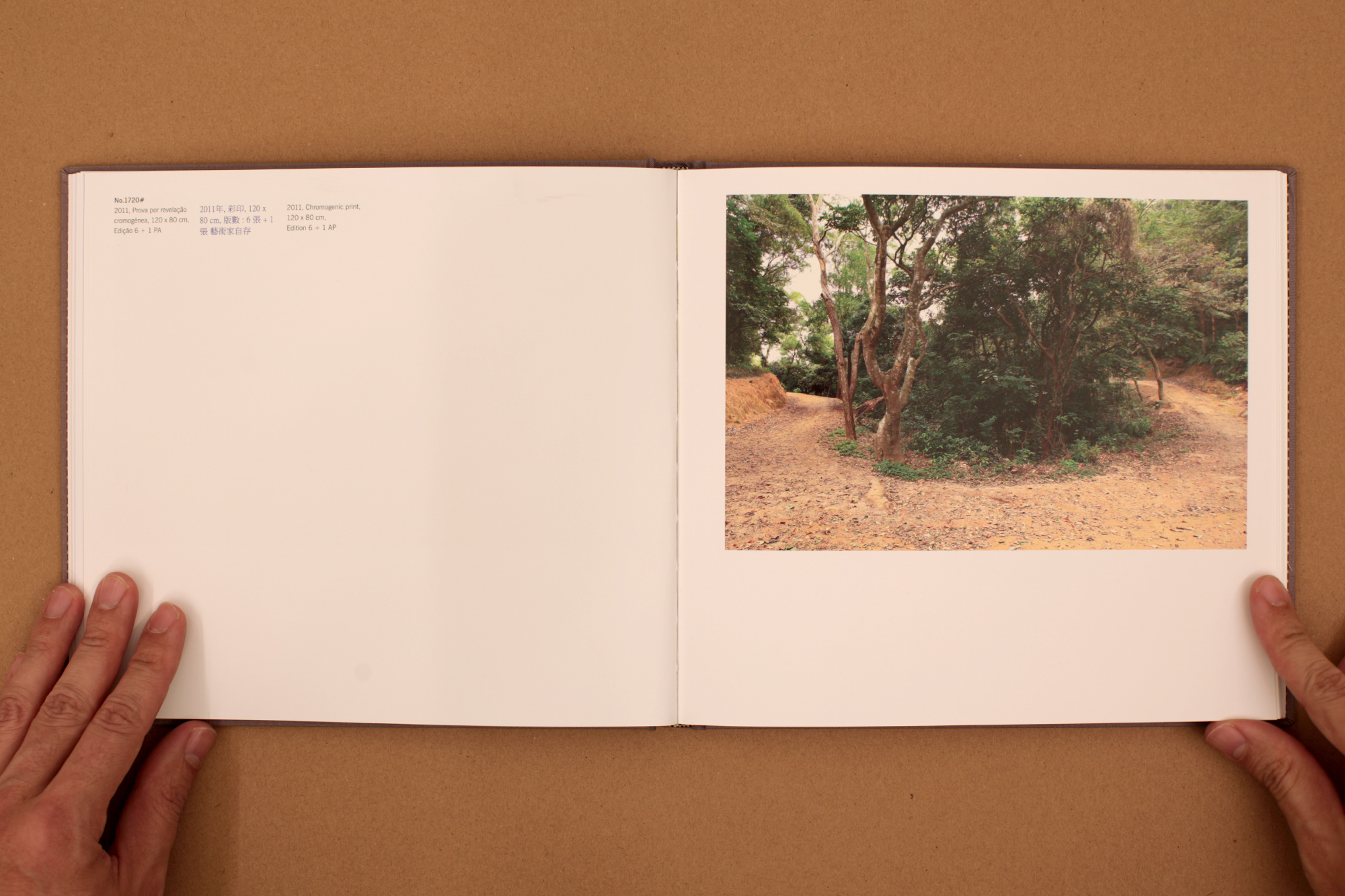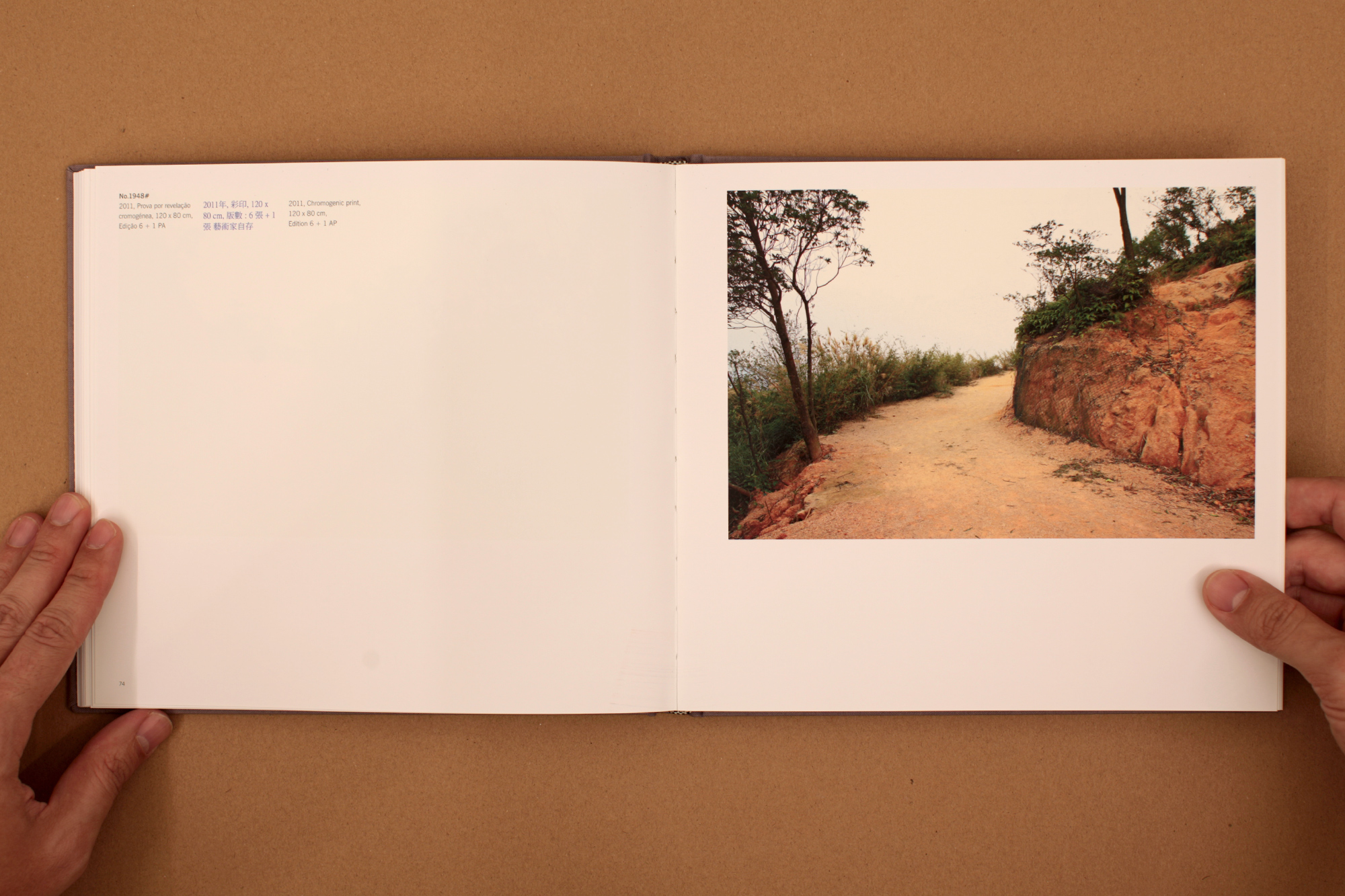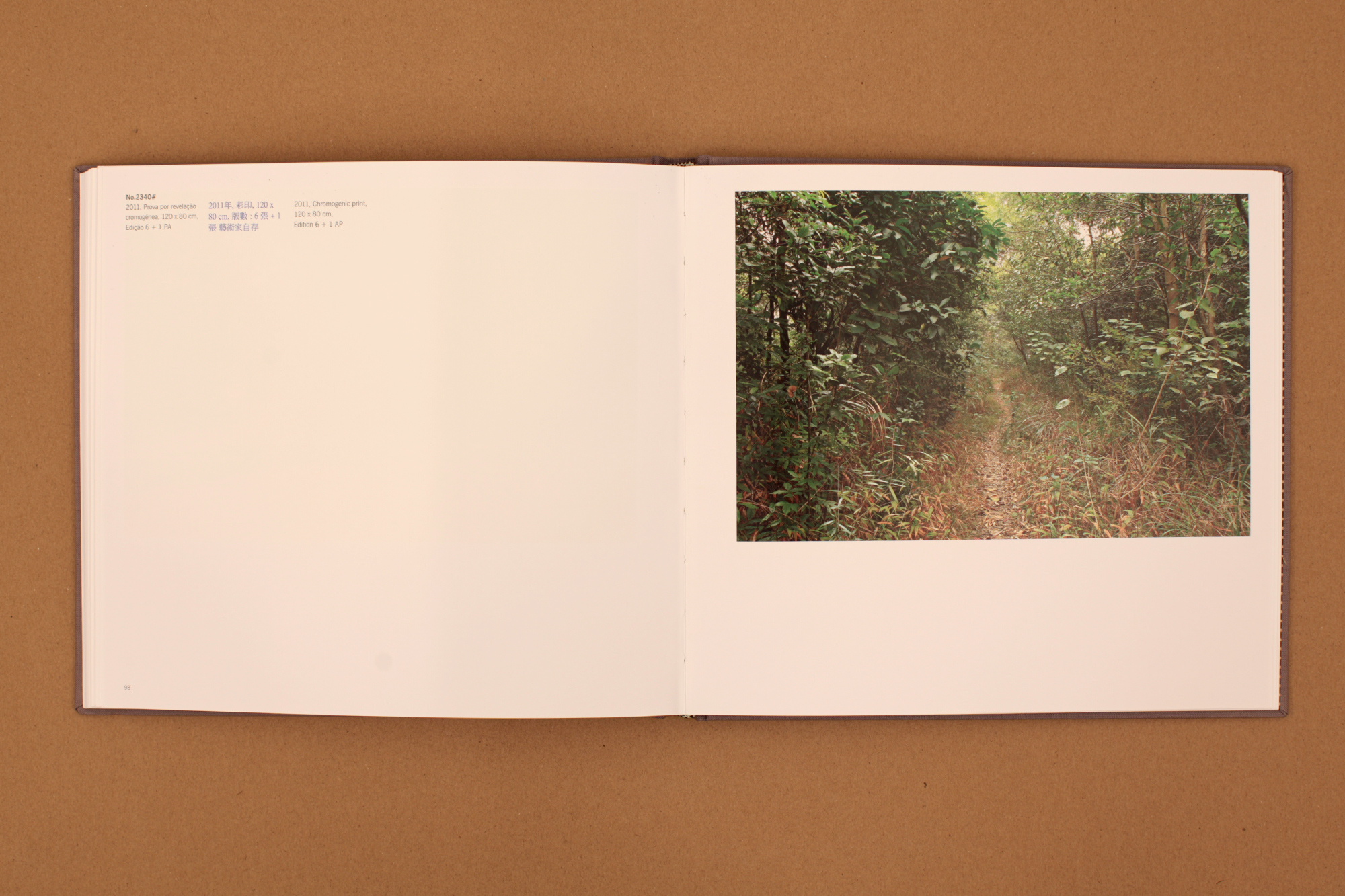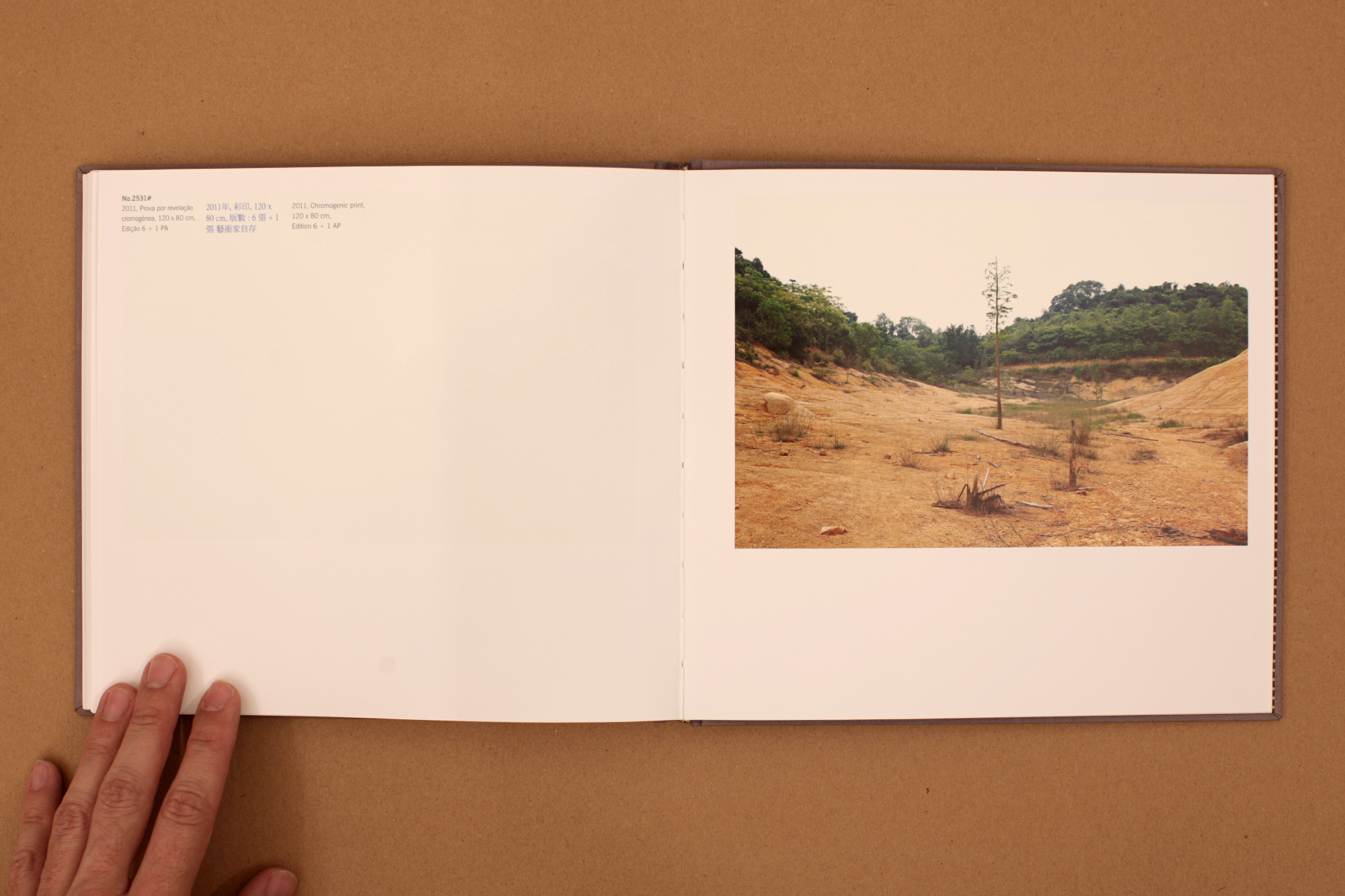Recursive Geography : book design by Júlio da Costa Pinto
João Ó has located a recursive geography—a fabled white whale of postmodern cultural production that has appeared in texts from the Borgesian to the Deleuzian—in South China, where, truth be told, it is a rather more commonplace occurrence. Whereas semantics has taught us to memorize the dictum that the map is not the territory, a constellation of cultural practices ranging from the casinos of the Cotai Strip to the Splendid China and Window on the World theme parks of Shenzhen and still further to the shopping mall urban planning of Hong Kong proves in a very material and highly sensible way that, following Gregory Bateson, the territory can only ever be defined through representation. In the recent photographic series Recursive Geography (2011) Ó mines this specific space of simulation and immersion in an attempt to seek out something more essential in the relationship between urban man and encroaching nature, a pseudo-ontological pursuit that inspires by virtue of its implicitly exaggerated approach. Consisting of some 32 images taken at various points and at various times along the Coloane Fitness Circuit, these photographs serve to demarcate an internal barrier between city (or, more broadly, technes) and wilderness, adopting a visual rhetoric of studio-style ambient lighting and careful positioning to present an impressively flexible relationship of environmental recursion.
Borrowing something (but perhaps not too much) from Fredric Jameson in terms of cognitive mapping while recognizing that the best map is always the territory in question, João Ó has explored the strikingly prosaic qualities of this particular hiking path extensively. He has structured the resulting images according to a series of categories, labels, tags, and attributes: some are inherently attractive because of formal qualities in rock formations and the colors of vegetation; some depict the ways in which plants and sand encroach back on the mostly well-maintained path; infrastructural components like electrical wires and empty reservoirs; one actual tree even appears akin to a camouflaged cell phone tower. At the same time, Ó (drawing on his architectural work) seeks to prove his willingness to redeem such synthetic visions of the newly natural, installing a second project entitled Suspended Gardens (2011). Here, plastic vines climb across folding metal beds as the sounds of planes and trucks boom out from the temporary structures—if Recursive Geography constitutes an implicit critique at a distance from the present situation, Suspended Gardens finds something productive to reclaim within the aesthetic strategies of Cantonese pastiche. The aesthetic is forced, but the artificiality is real.
Title
Recursive Geography
Production
Fundação Oriente, Delegação de Macau - China
Coordination
Exhibition and Catalogue
Ana Paula Cleto Godinho
Editor
João Ó
Essays
Joshua Roberts
Robin Peckham
Translation
Prompt Editorial Services
Rui Cascais Parada
Proofreading
Prompt Editorial Services
Grafic Design
Júlio da Costa Pinto
Printing Assitance
Intus Creative Studio
Printing
Zhonganfu Characteristic Printing (Shenzhen) Co. Ltd
Publisher
Impromptu Projects
Orient Foundation, June 2011
Sponsor
Cultural Affairs Bureau
Instituto dos Assuntos Municipais
Banco Nacional Ultramarino
Specifications
Size | 230mm (width) x 210mm (height)
Finish | Rounded Spine | Cover, coated fabric canvas, emboss relief, color stamping located | Inside, couche matre 200grs, inaset plus offset 135grs
Pages | 152
Print-run | 300 copies
Typefaces | New Gothic, 1908 | Knockout, 1994 | PMingLiU, 1992
Language | Portuguese | Chinese | English
ISBN 978-99937-603-2-0
Price
MOP$ 250.00 (Patacas)
Download PDF (extract)
For Sales
Contact publisher ([email protected])
Fundação Oriente, Delegação de Macau - China
Recursive Geography
Production
Fundação Oriente, Delegação de Macau - China
Coordination
Exhibition and Catalogue
Ana Paula Cleto Godinho
Editor
João Ó
Essays
Joshua Roberts
Robin Peckham
Translation
Prompt Editorial Services
Rui Cascais Parada
Proofreading
Prompt Editorial Services
Grafic Design
Júlio da Costa Pinto
Printing Assitance
Intus Creative Studio
Printing
Zhonganfu Characteristic Printing (Shenzhen) Co. Ltd
Publisher
Impromptu Projects
Orient Foundation, June 2011
Sponsor
Cultural Affairs Bureau
Instituto dos Assuntos Municipais
Banco Nacional Ultramarino
Specifications
Size | 230mm (width) x 210mm (height)
Finish | Rounded Spine | Cover, coated fabric canvas, emboss relief, color stamping located | Inside, couche matre 200grs, inaset plus offset 135grs
Pages | 152
Print-run | 300 copies
Typefaces | New Gothic, 1908 | Knockout, 1994 | PMingLiU, 1992
Language | Portuguese | Chinese | English
ISBN 978-99937-603-2-0
Price
MOP$ 250.00 (Patacas)
Download PDF (extract)
For Sales
Contact publisher ([email protected])
Fundação Oriente, Delegação de Macau - China

